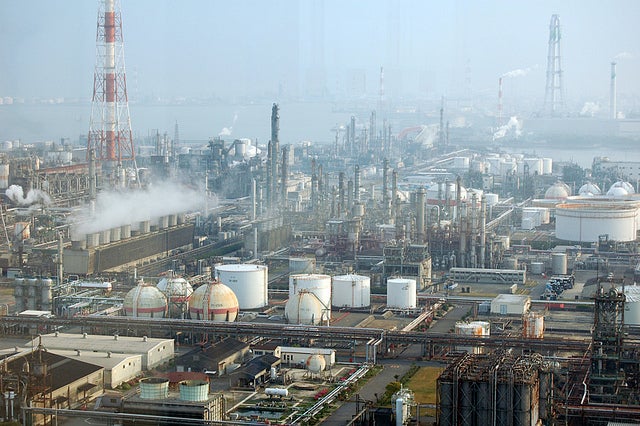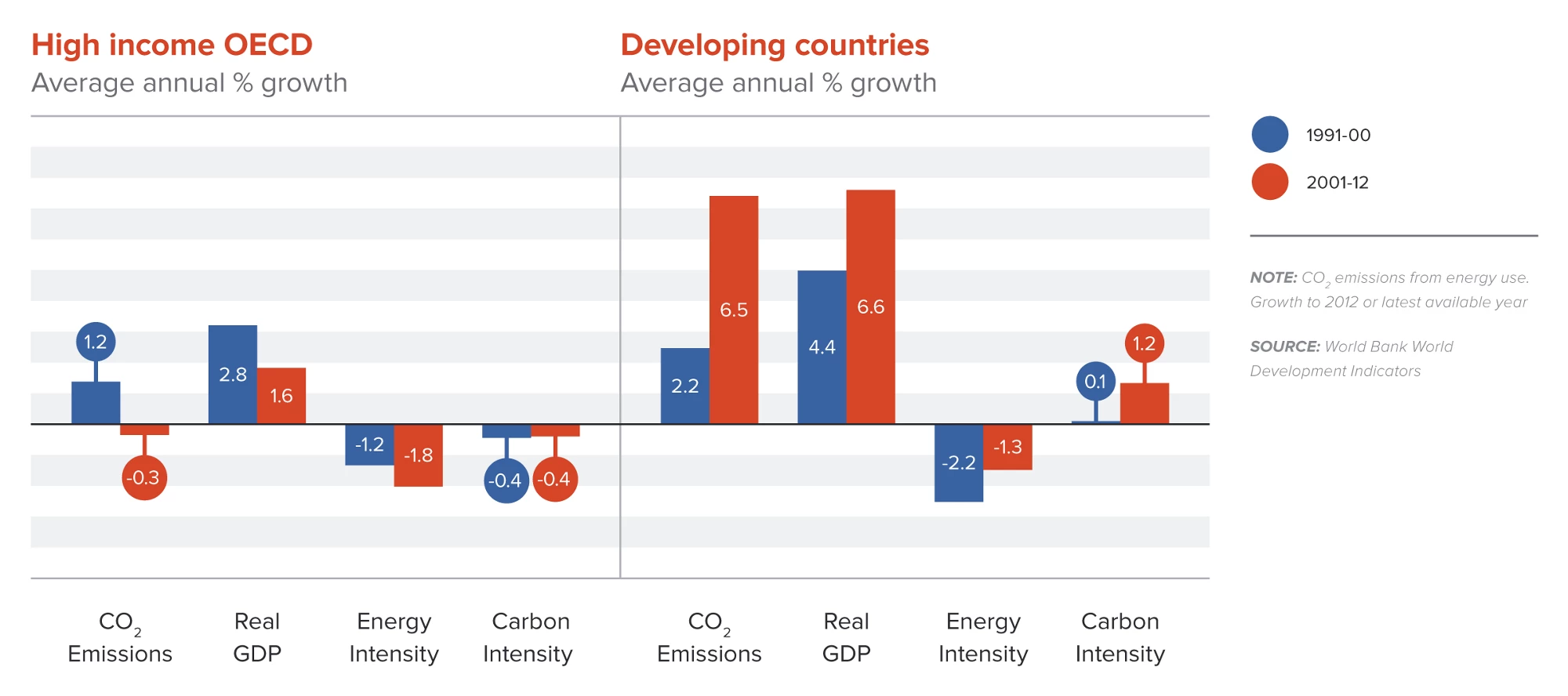
Emiko Kashiwagi / Flickr
Industries account for nearly one-third of direct and indirect global greenhouse-gas emissions, and they will be playing an increasingly important role in achieving the global targets expected to be set at the international climate summit in Paris in December. For example, the cement (5 percent), chemicals (7 percent) and iron and steel (7 percent) sectors account for nearly one-fifth of all global greenhouse-gas emissions, and those sectors have significant potential to reduce those emissions.
Tackling climate change by focusing on industries has long been a contentious issue. Some industries claim that regulation will impede economic growth by imposing additional burdens on competitive sectors. In some cases, they have an argument; but, if it is designed well and adapted to the context, a smart and timely intervention can influence a socially and economically positive systemic change.
Many businesses themselves, by pursuing cost-effective, long-term, environmentally sustainable production, long ago realized that “going green” can be highly advantageous, and they have been taking a pro-active approach toward addressing the issue precisely because it makes business sense. One group of global business leaders – including Unilever, Holcim, Virgin Group and others – have taken their commitment further by encouraging governments to lend their support for net-zero emissions strategies by 2050.
Even in developing countries, companies like Intel are investing millions of dollars in energy efficiency to save on current and future energy costs. The company has already saved $111 million since 2008 as a result of $59 million worth of sustainability investments in 1,500 projects worldwide.

Source: New Climate Economy 2014; World Bank World Development Indicators
The sentiment that climate action by both the private sector and the public sector is urgent was also an important theme highlighted by World Bank Group President Jim Kim during January's World Economic Forum conference in Davos. Mitigation measures, such as energy-efficiency policies, have long been seen as a way to improve profits and manage risks. The logic for energy efficiency, a key set of abatement actions by the manufacturing sector, is there.
The recent New Climate Economy initiative, produced by the Global Commission on the Economy and Climate, estimates that at least 50 percent – and, with broad and ambitious implementation, potentially up to 90 percent – of the actions needed to get onto a pathway that keeps warming from exceeding 2°C could be compatible with the goal of ensuring the competitiveness of industries.
The Case for Decarbonization Policies in Industries
On paper, this all looks good. On the ground, the picture is less clear.
A 2014 visit to manufacturing firms in Jordan, Egypt and Pakistan revealed some of the dramatic challenges that firms face in reducing their carbon footprint.
When a World Bank Group team was meeting with a chemicals firm in Jordan, for example, the CEO brought us a stack of energy audits, proclaiming that, if we came to him promoting energy efficiency, we would be wasting our time. Why would this CEO invest in energy efficiency if the firm had just fired staff due to regional economic stagnation?
Common in all three countries, this exposes an underlying factor: that many firms are not aware of the benefits of energy efficiency, or they consider it to be a lesser priority in their business decision-making.
A Path to Climate-Efficient Industries
Governments can, alongside the businesses that will be affected, develop measures that promote climate-efficient choices by industries. By tailoring policies and regulations in line with opportunities and hidden potential for operating cost reduction, these policies can spur growth rather than inhibit it.
Our project experience within the World Bank's Climate Efficient Industries team suggests that such measures will crucially include:
- standards and labeling systems on resource-efficient industrial machinery and appliances;
- green fiscal and financial incentives;
- awareness-raising and dialogues; and
- promotion of climate-friendly technologies.
In Guatemala, Vietnam and Bangladesh, our projects are working with Special Economic Zones to help them adopt low-carbon or "green zone" strategies and guidelines.
All these projects are highly sensitive to the needs of the private sector and leverage dialogue between these different stakeholders to ensure awareness-raising and transparency.
These steps can drive competitiveness and climate-efficient industries. But the bottom line is that countries like Korea, China and India have used a mixture of these policies to green their industries and upgrade their competitiveness.
This analysis has received significant contributions from Nidal Mahmoud, an independent consultant on climate-efficient industries.


Join the Conversation